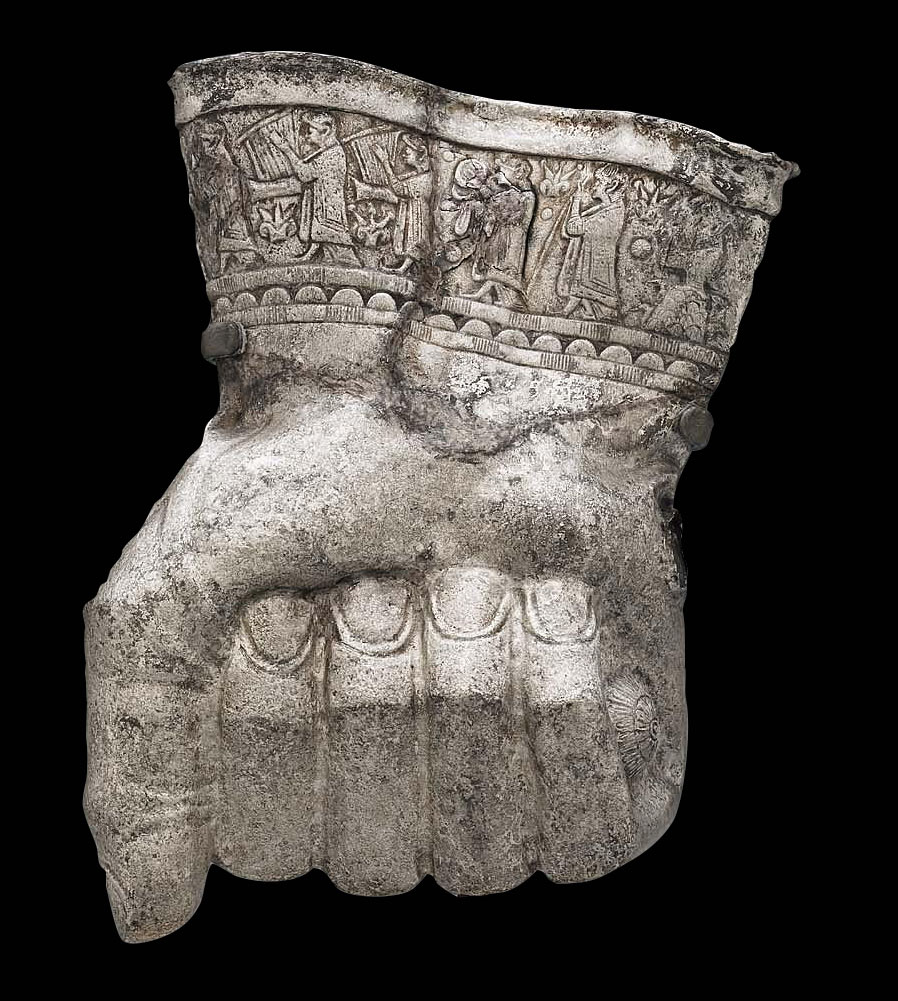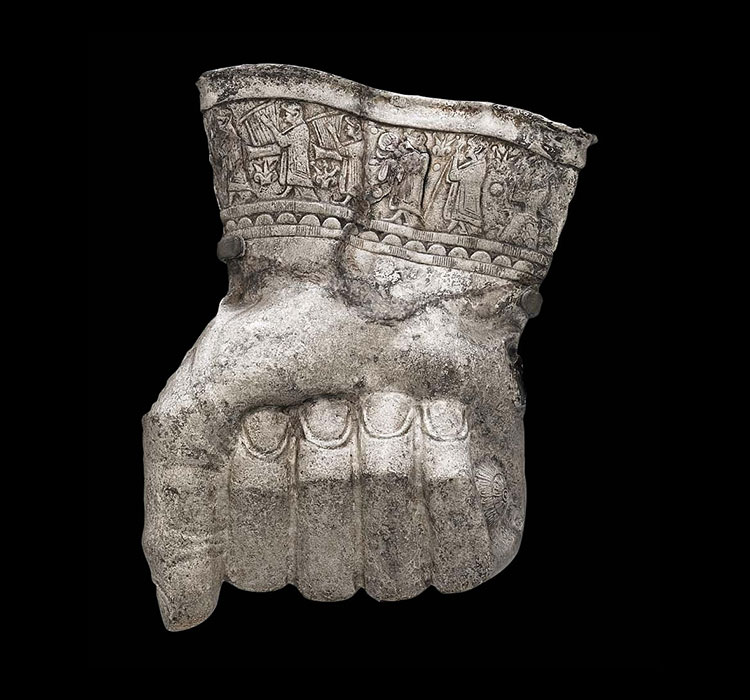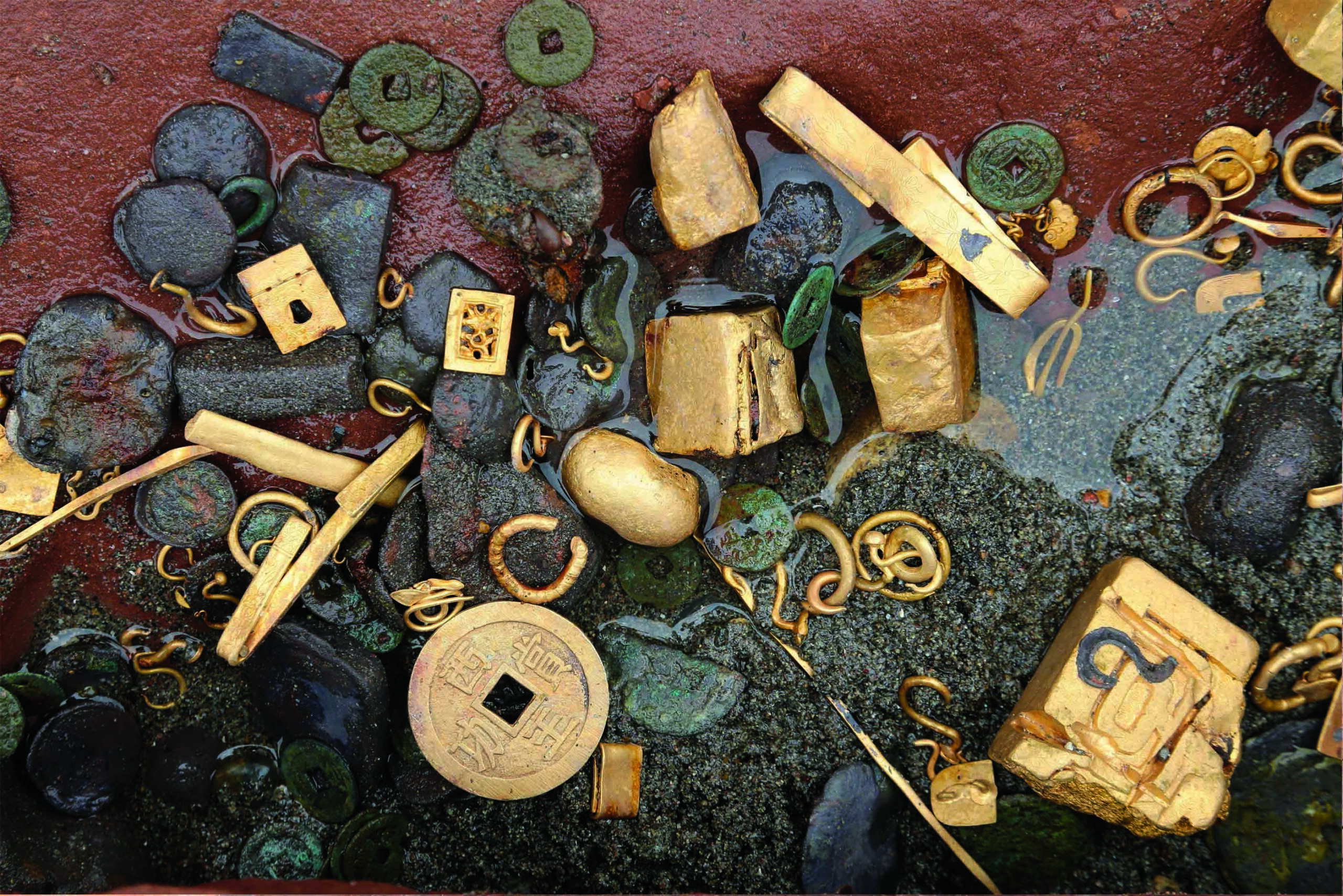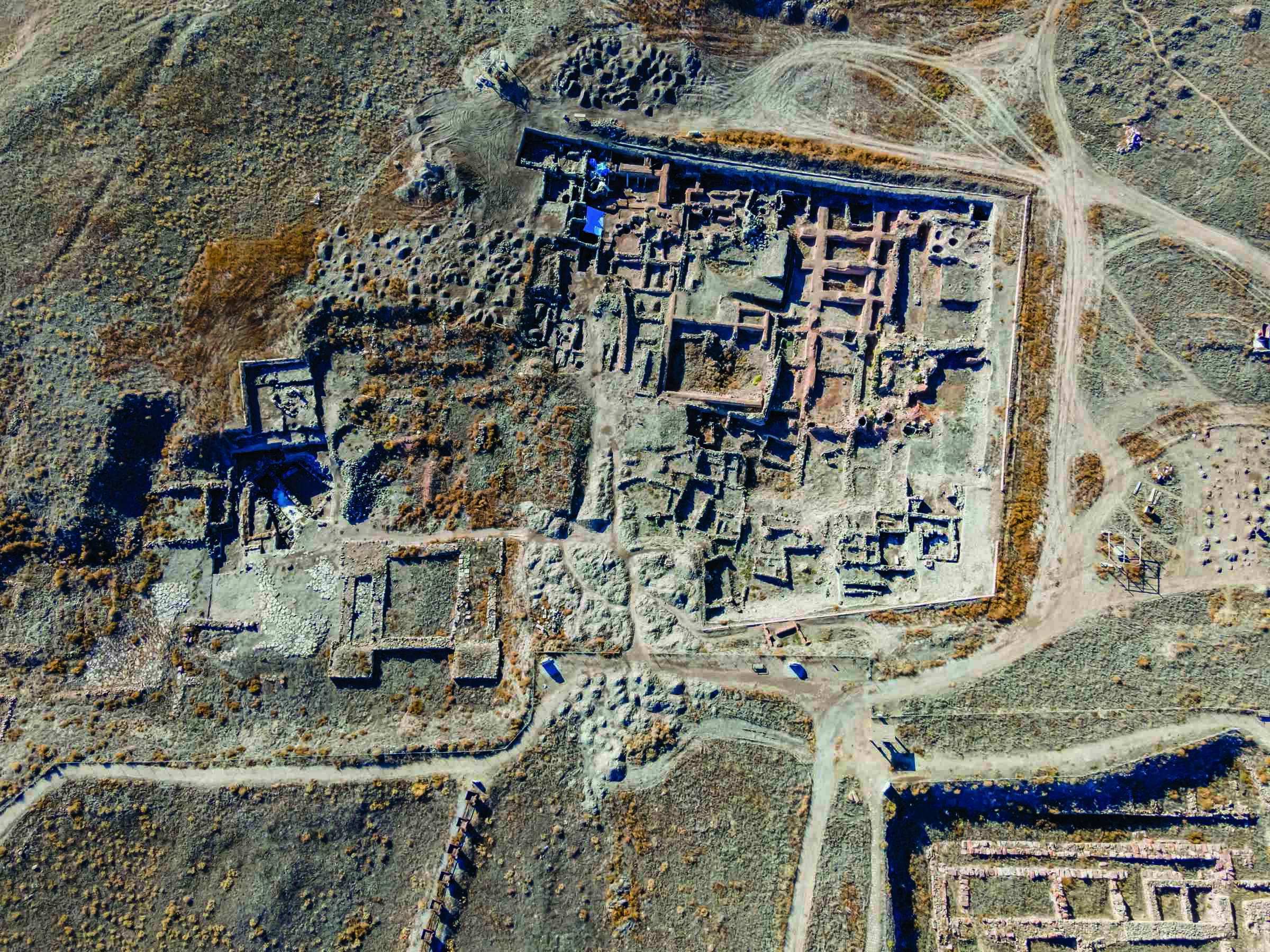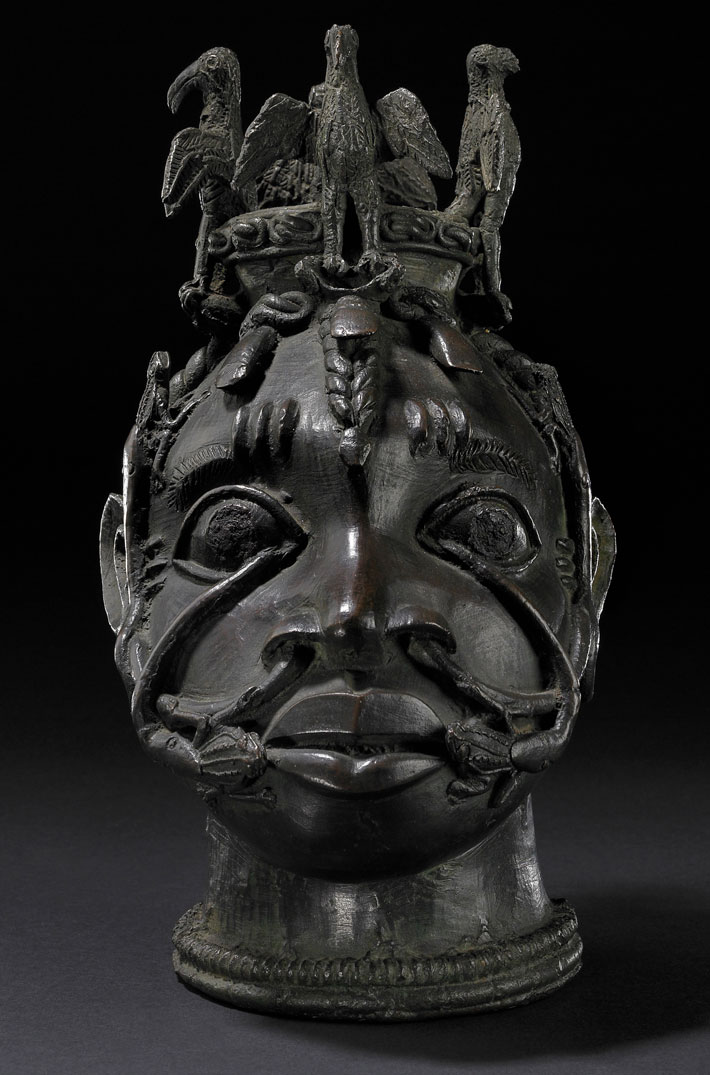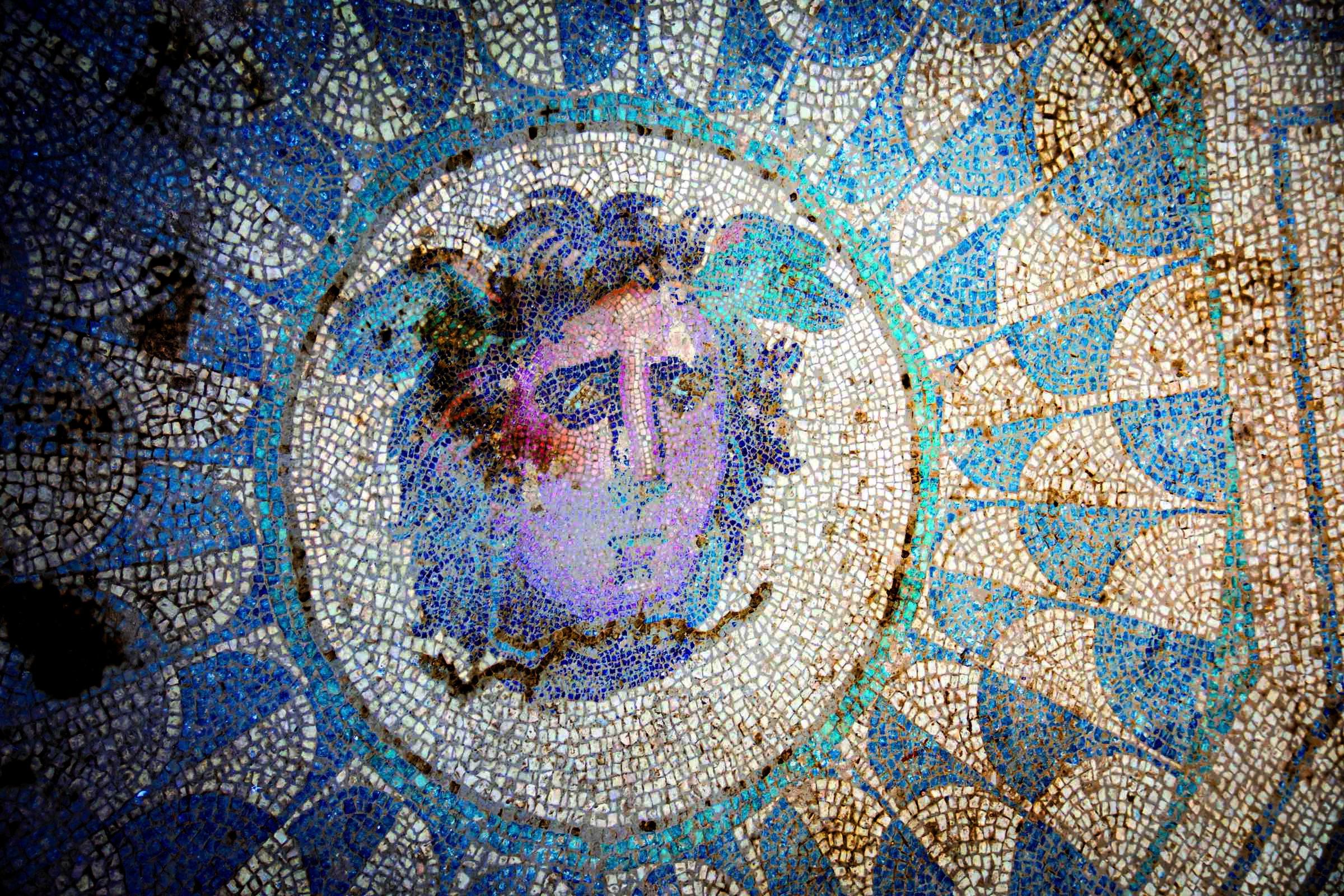
What is it?
Sculpture of a fist
Material
Silver
Culture
Hittite
Date
Ca. 1375–1355 B.C.
Dimensions
4 by 6 inches
Found
Turkey
Statues of gods featured prominently throughout the ancient world, but many of those that are best known from literary evidence have never been found. These include the nearly 40-foot-tall ivory and gold statue of the Greek goddess Athena that once stood at the back of the Parthenon and a wooden statue of the Babylonian god Marduk that was covered in gold and silver and housed in Babylon’s main temple. Archaeologist Jorrit Kelder of the University of Hamburg believes that artists in the Hittite Empire, which ruled over Anatolia (modern Turkey) from about 1600 to 1200 B.C. from its capital at Hattusha, also created statues of deities out of both wood and precious materials that have since disappeared. He suggests that this silver fist, which for decades archaeologists have identified as a rhyton, a type of ritual vessel used for libations, may actually have been part of a life-size statue of the Hittite weather god, Tarhuna. “I’m very interested in challenging certitudes in our field that have been repeated so often and have never really been questioned since they were first proposed, and have since become facts in the archaeological narrative,” says Kelder. “The identification of the fist as a vessel struck me this way.”

One piece of evidence Kelder has cited as support for his new interpretation is the frieze running around the top of the artifact. It depicts a procession including Tarhuna and the Hittite king Tudhaliya II (reigned ca. 1375–1355 B.C.) performing a libation ritual. “The vessel shown there is very clearly a pouring vessel,” says Kelder. “The fist isn’t—its peculiar shape would have been awkward and messy to drink from or even pour liquid out of.” He also found that Hittite texts contain numerous mentions of wooden cult statues. Finally, Kelder notes, there is a torn section at the rim where a nail may have affixed the fist to a wooden arm that does not survive. “I propose,” says Kelder, “that the fist may be the first object of a lost world of Hittite divine imagery.”


